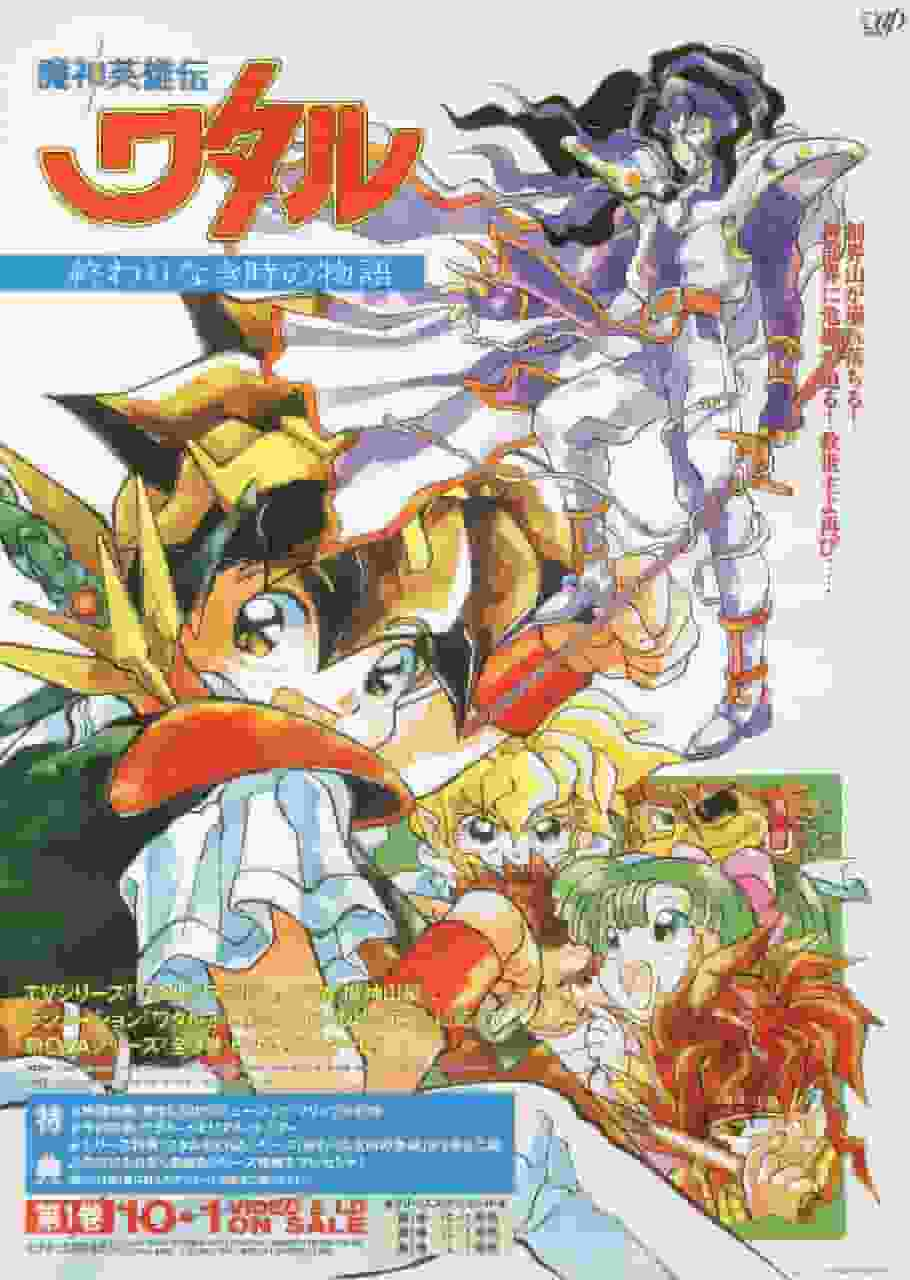A thorough review of "Tomoko's Adventure on a Crane"! A fascinating and moving journey

A comprehensive review and recommendation of "Tomoko's Adventure on a Crane"Overview"Tomoko's Adventure on a Crane" is a short animated film released in May 1993. It is 23 minutes long and consists of one episode. It was written by Miho Cibot, directed by Seiji Arihara, and produced by Mushi Production. The film tells the story of Tomoko, a sixth grade girl who visits the Hiroshima Peace Memorial Museum and experiences the tragedy of the atomic bomb victims and their wishes for peace. Born from the idea of French filmmaker Miho Cibot, "I want to convey my wish for the abolition of nuclear weapons to children around the world through animation," this film was produced through the movement of the "Peace Animation Association, which presents peace animation to the children of the world," which was launched in 1989. English and French versions were produced in 1995 and have been screened in over 65 countries around the world. storyTomoko, a lively sixth grade girl, visits Hiroshima Peace Memorial Museum for her summer vacation project "My Adventure." After experiencing the feelings of those who were exposed to the atomic bomb from the exhibits, she is overwhelmed by the horror of the atomic bomb. With a heavy and sad heart, Tomoko heads to Peace Memorial Park, where she is captivated by colorful paper cranes and a statue of a young girl. She begins to fold a crane out of a candy wrapper, and when she blows on the crane, a statue of a young girl descends in front of her. The girl is Sadako, who was exposed to the atomic bomb. Tomoko becomes friends with Sadako, and through her experiences she comes to understand more deeply the tragedy of the atomic bomb and her desire for peace. Commentary"Tomoko on a Crane" was created to convey the desire for the abolition of nuclear weapons to children around the world. In 1989, the "Peace Animation Association, which presents peace animation to the children of the world" was established at the suggestion of Miho Cibot, and this work was completed through that movement. This work depicts the tragedy of the atomic bomb and the desire for peace through Tomoko, who becomes friends with Sadako, a girl who was exposed to the atomic bomb. English and French versions were produced in 1995 and have been screened in over 65 countries around the world. The voice of the main character, Tomoko, is provided by Kotono Mitsuishi, who is known for her role as Tsukino Usagi in "Sailor Moon," and the theme song is sung by Baisho Chieko. cast
Main Staff
Theme songs and music
Ratings and Recommendations"Tomoko's Adventure on a Crane" is a work that was created to convey the desire for the abolition of nuclear weapons to children around the world, and this is extremely significant. The story is simple, with a sixth-grade elementary school girl named Tomoko visiting the Hiroshima Peace Memorial Museum and experiencing the tragedy of atomic bomb victims and their desire for peace, but the depiction of the horror of the atomic bomb and their desire for peace deeply moves viewers. In particular, the scene where Tomoko becomes friends with Sadako is very moving. The greatest feature of this work is its high educational value in conveying the importance of peace to children. By directly depicting the tragedy of the atomic bomb, viewers are able to experience its horror. Furthermore, by Tomoko becoming friends with Sadako, she is able to indirectly experience the experiences of atomic bomb survivors, deepening her desire for peace. A work with such educational value can be effectively used in school education and at home. The fact that the film has been shown in over 65 countries around the world also shows that its universal theme and message have resonated with many people. In particular, the fact that English and French versions were produced shows that efforts were made to convey a message of peace beyond the barriers of language and culture. Films with such an international perspective provide an opportunity to think about peace from a global perspective. The cast and staff are also a talented bunch. Mitsuishi Kotono, who voices the main character Tomoko, is a talented voice actress known for her role as Tsukino Usagi in "Sailor Moon," and her performance conveys Tomoko's emotions realistically. Baisho Chieko, who sang the theme song, also expresses the theme of the work deeply. Director Arihara Seiji was also in charge of the script and storyboards, and his vision is reflected throughout the film. Furthermore, the production skills of Mushi Productions also enhance the quality of this work. The music also adds to the appeal of this work. The theme song "Anoko wa Miteru" composed by Koroku Reijiro, along with the singing voice of Baisho Chieko, deeply expresses the theme of the work. In addition, under the direction of music director Aketagawa Susumu, the sound effects and background music also enhance the atmosphere of the work. This work is highly regarded not only for its educational value in conveying the importance of peace to children, but also for its universal themes and messages. In particular, by directly depicting the tragedy of the atomic bomb, viewers are able to feel its horror. Furthermore, by Tomoko becoming friends with Sadako, viewers are able to indirectly experience the experiences of atomic bomb survivors, deepening their desire for peace. A work with such educational value can be effectively used in school education and at home. Furthermore, the fact that the film has been shown in over 65 countries around the world shows that its universal theme and message have resonated with many people. In particular, the fact that English and French versions were produced shows that efforts were made to convey a message of peace beyond the barriers of language and culture. Films with such an international perspective provide an opportunity to think about peace from a global perspective. The cast and staff are also a talented bunch. Mitsuishi Kotono, who voices the main character Tomoko, is a talented voice actress known for her role as Tsukino Usagi in "Sailor Moon," and her performance conveys Tomoko's emotions realistically. Baisho Chieko, who sang the theme song, also expresses the theme of the work deeply. Director Arihara Seiji was also in charge of the script and storyboards, and his vision is reflected throughout the film. Furthermore, the production skills of Mushi Productions also enhance the quality of this work. The music also adds to the appeal of this work. The theme song "Anoko wa Miteru" composed by Koroku Reijiro, along with the singing voice of Baisho Chieko, deeply expresses the theme of the work. In addition, under the direction of music director Aketagawa Susumu, the sound effects and background music also enhance the atmosphere of the work. This work is highly regarded not only for its educational value in conveying the importance of peace to children, but also for its universal themes and messages. In particular, by directly depicting the tragedy of the atomic bomb, viewers are able to feel its horror. Furthermore, by Tomoko becoming friends with Sadako, viewers are able to indirectly experience the experiences of atomic bomb survivors, deepening their desire for peace. A work with such educational value can be effectively used in school education and at home. Furthermore, the fact that the film has been shown in over 65 countries around the world shows that its universal theme and message have resonated with many people. In particular, the fact that English and French versions were produced shows that efforts were made to convey a message of peace beyond the barriers of language and culture. Films with such an international perspective provide an opportunity to think about peace from a global perspective. The cast and staff are also a talented bunch. Mitsuishi Kotono, who voices the main character Tomoko, is a talented voice actress known for her role as Tsukino Usagi in "Sailor Moon," and her performance conveys Tomoko's emotions realistically. Baisho Chieko, who sang the theme song, also expresses the theme of the work deeply. Director Arihara Seiji was also in charge of the script and storyboards, and his vision is reflected throughout the film. Furthermore, the production skills of Mushi Productions also enhance the quality of this work. The music also adds to the appeal of this work. The theme song "Anoko wa Miteru" composed by Koroku Reijiro, along with the singing voice of Baisho Chieko, deeply expresses the theme of the work. In addition, under the direction of music director Aketagawa Susumu, the sound effects and background music also enhance the atmosphere of the work. This work is highly regarded not only for its educational value in conveying the importance of peace to children, but also for its universal themes and messages. In particular, by directly depicting the tragedy of the atomic bomb, viewers are able to feel its horror. Furthermore, by Tomoko becoming friends with Sadako, viewers are able to indirectly experience the experiences of atomic bomb survivors, deepening their desire for peace. A work with such educational value can be effectively used in school education and at home. Furthermore, the fact that the film has been shown in over 65 countries around the world shows that its universal theme and message have resonated with many people. In particular, the fact that English and French versions were produced shows that efforts were made to convey a message of peace beyond the barriers of language and culture. Films with such an international perspective provide an opportunity to think about peace from a global perspective. The cast and staff are also a talented bunch. Mitsuishi Kotono, who voices the main character Tomoko, is a talented voice actress known for her role as Tsukino Usagi in "Sailor Moon," and her performance conveys Tomoko's emotions realistically. Baisho Chieko, who sang the theme song, also expresses the theme of the work deeply. Director Arihara Seiji was also in charge of the script and storyboards, and his vision is reflected throughout the film. Furthermore, the production skills of Mushi Productions also enhance the quality of this work. The music also adds to the appeal of this work. The theme song "Anoko wa Miteru" composed by Koroku Reijiro, along with the singing voice of Baisho Chieko, deeply expresses the theme of the work. In addition, under the direction of music director Aketagawa Susumu, the sound effects and background music also enhance the atmosphere of the work. This work is highly regarded not only for its educational value in conveying the importance of peace to children, but also for its universal themes and messages. In particular, by directly depicting the tragedy of the atomic bomb, viewers are able to feel its horror. Furthermore, by Tomoko becoming friends with Sadako, viewers are able to indirectly experience the experiences of atomic bomb survivors, deepening their desire for peace. A work with such educational value can be effectively used in school education and at home. Furthermore, the fact that the film has been shown in over 65 countries around the world shows that its universal theme and message have resonated with many people. In particular, the fact that English and French versions were produced shows that efforts were made to convey a message of peace beyond the barriers of language and culture. Films with such an international perspective provide an opportunity to think about peace from a global perspective. The cast and staff are also a talented bunch. Mitsuishi Kotono, who voices the main character Tomoko, is a talented voice actress known for her role as Tsukino Usagi in "Sailor Moon," and her performance conveys Tomoko's emotions realistically. Baisho Chieko, who sang the theme song, also expresses the theme of the work deeply. Director Arihara Seiji was also in charge of the script and storyboards, and his vision is reflected throughout the film. Furthermore, the production skills of Mushi Productions also enhance the quality of this work. The music also adds to the appeal of this work. The theme song "Anoko wa Miteru" composed by Koroku Reijiro, along with the singing voice of Baisho Chieko, deeply expresses the theme of the work. In addition, under the direction of music director Aketagawa Susumu, the sound effects and background music also enhance the atmosphere of the work. This work is highly regarded not only for its educational value in conveying the importance of peace to children, but also for its universal themes and messages. In particular, by directly depicting the tragedy of the atomic bomb, viewers are able to feel its horror. Furthermore, by Tomoko becoming friends with Sadako, viewers are able to indirectly experience the experiences of atomic bomb survivors, deepening their desire for peace. A work with such educational value can be effectively used in school education and at home. Furthermore, the fact that the film has been shown in over 65 countries around the world shows that its universal theme and message have resonated with many people. In particular, the fact that English and French versions were produced shows that efforts were made to convey a message of peace beyond the barriers of language and culture. Films with such an international perspective provide an opportunity to think about peace from a global perspective. The cast and staff are also a talented bunch. Mitsuishi Kotono, who voices the main character Tomoko, is a talented voice actress known for her role as Tsukino Usagi in "Sailor Moon," and her performance conveys Tomoko's emotions realistically. Baisho Chieko, who sang the theme song, also expresses the theme of the work deeply. Director Arihara Seiji was also in charge of the script and storyboards, and his vision is reflected throughout the film. Furthermore, the production skills of Mushi Productions also enhance the quality of this work. The music also adds to the appeal of this work. The theme song "Anoko wa Miteru" composed by Koroku Reijiro, along with the singing voice of Baisho Chieko, deeply expresses the theme of the work. In addition, under the direction of music director Aketagawa Susumu, the sound effects and background music also enhance the atmosphere of the work. This work is highly regarded not only for its educational value in conveying the importance of peace to children, but also for its universal themes and messages. In particular, by directly depicting the tragedy of the atomic bomb, viewers are able to feel its horror. Furthermore, by Tomoko becoming friends with Sadako, viewers are able to indirectly experience the experiences of atomic bomb survivors, deepening their desire for peace. A work with such educational value can be effectively used in school education and at home. Furthermore, the fact that the film has been shown in over 65 countries around the world shows that its universal theme and message have resonated with many people. In particular, the fact that English and French versions were produced shows that efforts were made to convey a message of peace beyond the barriers of language and culture. Films with such an international perspective provide an opportunity to think about peace from a global perspective. The cast and staff are also a talented bunch. Mitsuishi Kotono, who voices the main character Tomoko, is a talented voice actress known for her role as Tsukino Usagi in "Sailor Moon," and her performance conveys Tomoko's emotions realistically. Baisho Chieko, who sang the theme song, also expresses the theme of the work deeply. Director Arihara Seiji was also in charge of the script and storyboards, and his vision is reflected throughout the film. Furthermore, the production skills of Mushi Productions also enhance the quality of this work. The music also adds to the appeal of this work. The theme song "Anoko wa Miteru" composed by Koroku Reijiro, along with the singing voice of Baisho Chieko, deeply expresses the theme of the work. In addition, under the direction of music director Aketagawa Susumu, the sound effects and background music also enhance the atmosphere of the work. This work is highly regarded not only for its educational value in conveying the importance of peace to children, but also for its universal themes and messages. In particular, by directly depicting the tragedy of the atomic bomb, viewers are able to feel its horror. Furthermore, by Tomoko becoming friends with Sadako, viewers are able to indirectly experience the experiences of atomic bomb survivors, deepening their desire for peace. A work with such educational value can be effectively used in school education and at home. Furthermore, the fact that the film has been shown in over 65 countries around the world shows that its universal theme and message have resonated with many people. In particular, the fact that English and French versions were produced shows that efforts were made to convey a message of peace beyond the barriers of language and culture. Films with such an international perspective provide an opportunity to think about peace from a global perspective. The cast and staff are also a talented bunch. Mitsuishi Kotono, who voices the main character Tomoko, is a talented voice actress known for her role as Tsukino Usagi in "Sailor Moon," and her performance conveys Tomoko's emotions realistically. Baisho Chieko, who sang the theme song, also expresses the theme of the work deeply. Director Arihara Seiji was also in charge of the script and storyboards, and his vision is reflected throughout the film. Furthermore, the production skills of Mushi Productions also enhance the quality of this work. The music also adds to the appeal of this work. The theme song "Anoko wa Miteru" composed by Koroku Reijiro, along with the singing voice of Baisho Chieko, deeply expresses the theme of the work. In addition, under the direction of music director Aketagawa Susumu, the sound effects and background music also enhance the atmosphere of the work. This work is highly regarded not only for its educational value in conveying the importance of peace to children, but also for its universal themes and messages. In particular, by directly depicting the tragedy of the atomic bomb, viewers are able to feel its horror. Furthermore, by Tomoko becoming friends with Sadako, viewers are able to indirectly experience the experiences of atomic bomb survivors, deepening their desire for peace. A work with such educational value can be effectively used in school education and at home. Furthermore, the fact that the film has been shown in over 65 countries around the world shows that its universal theme and message have resonated with many people. In particular, the fact that English and French versions were produced shows that efforts were made to convey a message of peace beyond the barriers of language and culture. Films with such an international perspective provide an opportunity to think about peace from a global perspective. The cast and staff are also a talented bunch. Mitsuishi Kotono, who voices the main character Tomoko, is a talented voice actress known for her role as Tsukino Usagi in "Sailor Moon," and her performance conveys Tomoko's emotions realistically. Baisho Chieko, who sang the theme song, also expresses the theme of the work deeply. Director Arihara Seiji was also in charge of the script and storyboards, and his vision is reflected throughout the film. Furthermore, the production skills of Mushi Productions also enhance the quality of this work. The music also adds to the appeal of this work. The theme song "Anoko wa Miteru" composed by Koroku Reijiro, along with the singing voice of Baisho Chieko, deeply expresses the theme of the work. In addition, under the direction of music director Aketagawa Susumu, the sound effects and background music also enhance the atmosphere of the work. |
<<: Appeal and evaluation of "MINKY MOMO IN Bridge over Dreams": A moving story and deep characters
>>: Ganbatte! Mama - A thorough review of a touching story of maternal love
Recommend
The second batch of EVA-linked GU costumes is released and will be released in Japan on June 19
Today, the second wave of theme costumes from the...
Interesting Star Wars History: Darth Vader Almost Became a Samurai
We all know Darth Vader in "Star Wars",...
The sequel to the classic sci-fi film "Tron: Legacy" adds two new actors
The third installment in Disney's resurrected...
The ultimate year-end chaos! C97 anime festival wonderful COS beautiful pictures collection
The twice-a-year ACG fan convention still seems u...
New Shonan Bakusozoku Aragure Night 2 - A reevaluation of the passionate youth and a moving recommendation
New Shonan Bakusozoku Arakure Night 2 - New Shona...
'Ahsoka' director: Anakin and Ahsoka 'always' been together in 'Star Wars'
It doesn't seem surprising that Anakin Skywal...
"7SEEDS Season 2" Review: Intensifying the struggle for survival and character growth
7SEEDS 2nd Season - Seven Seas Dainiki - All-roun...
Why do important characters have to die? The screenwriter of "Avengers 4" gives you an unreserved answer
Advance warning: This article contains a lot of s...
Netflix's live-action He-Man: Homecoming movie aborted, $30 million wasted
According to a recent report by Variety, Netflix&...
The appeal and reviews of One Turn Kill in Another World - Enjoying life in another world with my sister
A comprehensive review and recommendation of &quo...
"Star Yodel" review: What is the appeal of Minna no Uta?
"Star Yodel": NHK's gem-like animat...
KING OF PRISM -Shiny Seven Stars- III The charms of Leo x Yuu x Alex are thoroughly dissected!
The appeal and reviews of "KING OF PRISM -Sh...
Matt Damon will join Thor 4 and has already arrived at the Australian crew
According to Australian News Network, Matt Damon ...
A deep review of Tsubasa Chronicle Season 2: A thorough explanation of the story and character evolution
Tsubasa Chronicle [2nd Season] - A moving journey...
The first Chinese original comic "Assassin's Creed: Dynasty" will be officially launched on August 26
July 30, 2020 - Today, Ubisoft announced that the...









